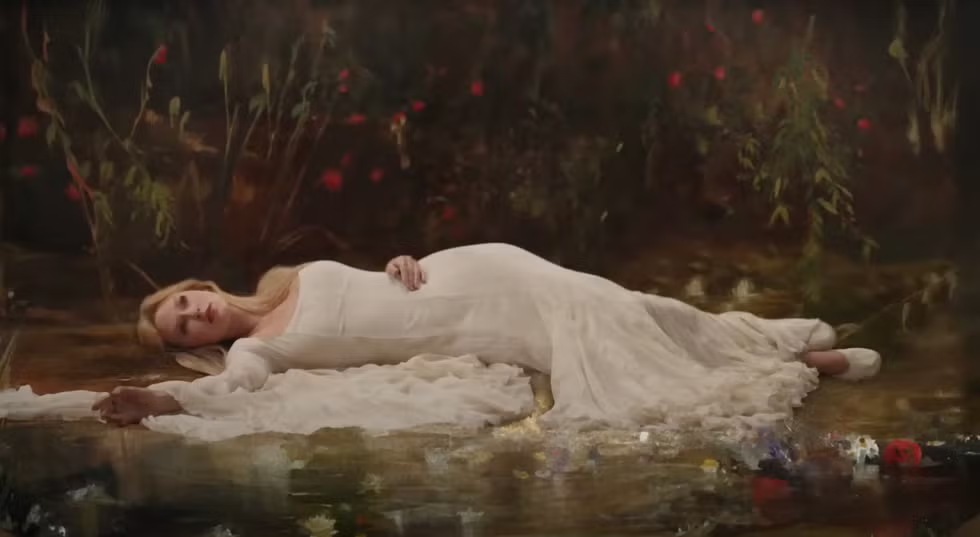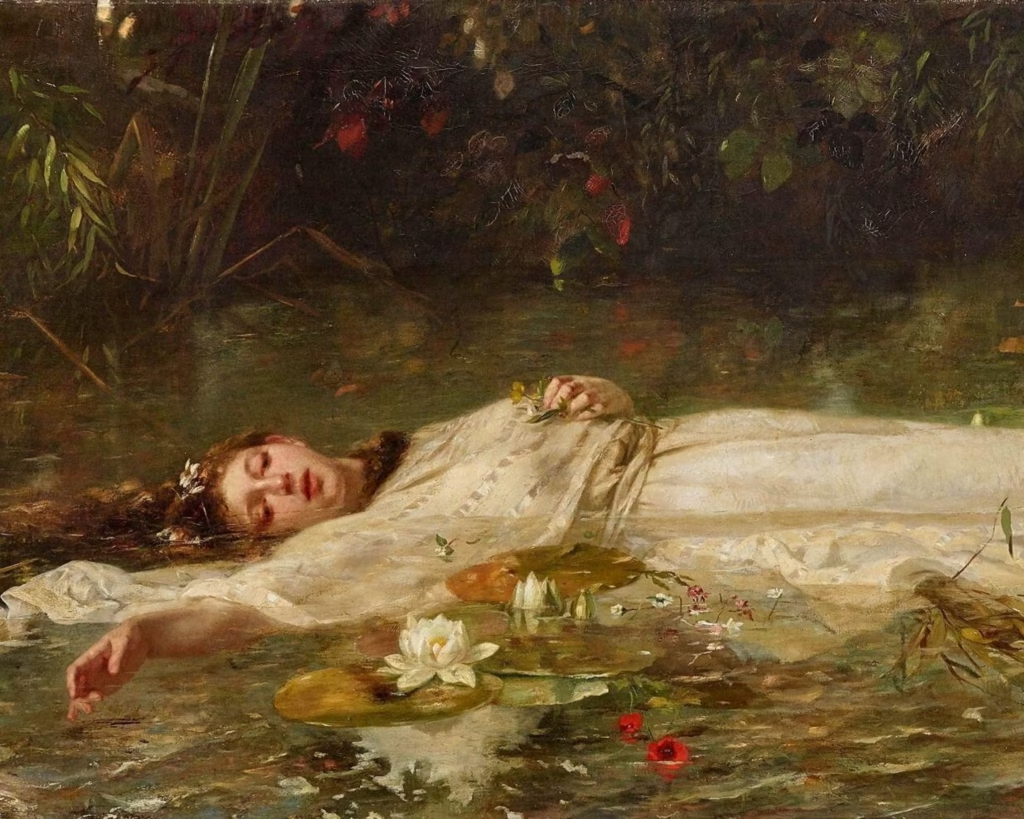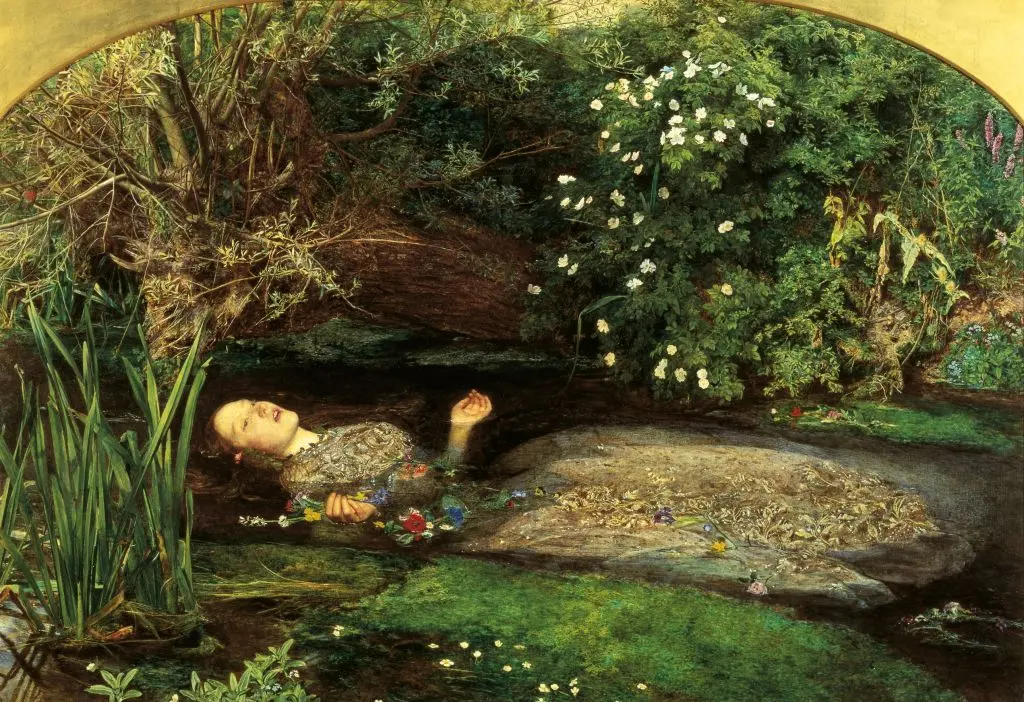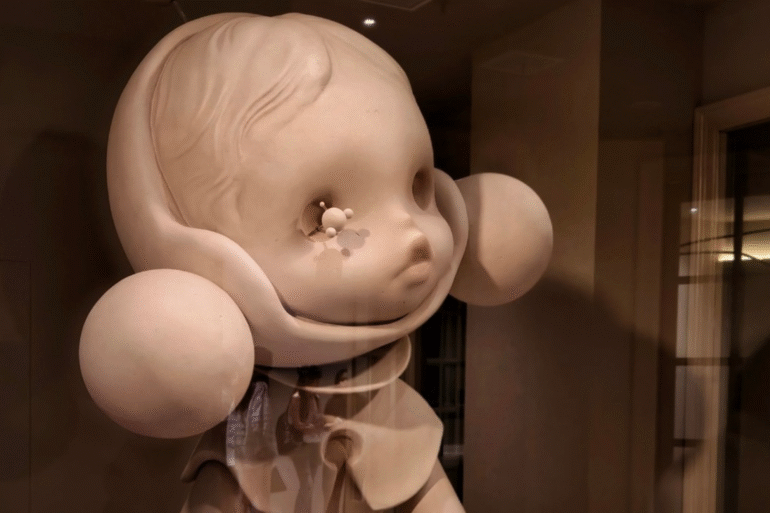Suddenly, a painting that rarely got much attention went viral.
When The Fate of Ophelia music video premiered earlier this month, it was immediately clear that Taylor Swift was drawing from literary and visual traditions. The opening scene alone—Swift floating in a pale dress, eyes closed, surrounded by water—sparked comparisons to John Everett Millais’s iconic Ophelia (painted in 1852) But then the internet, or should we say the eagle-eyed Swifties, did what they do best: to look closer.
Related story: Taylor Swift’s ‘The Life of a Showgirl’: So this is what happy feels like
Related story: Endgame: Inside Taylor Swift and Travis Kelce’s love story
Related story: 13 clues that, all along, an invisible string ties Taylor Swift and Travis Kelce


Within days, Swifties online began pointing to another version of Ophelia: a less famous painting by Friedrich Heyser, dated around 1900, and hanging in Museum Wiesbaden in central Germany. The pose matched. The lighting matched. Even the dress—plain, white, and billowing—looked closer to Heyser’s than to Millais’s flower-laden version. Suddenly, a painting that rarely got much attention went viral.
According to The Guardian and The Independent, museum staff were caught entirely off guard. Spokesperson Susanne Hirschmann said that the resemblance was first noticed by a staff member’s friend — a Swiftie— who compared the video frame to the painting. By the weekend, over 500 visitors had arrived, many of them teens and young women asking specifically for Heyser’s Ophelia. Some had even traveled from other cities in Germany just to see it in person.
“It’s been a shock, to be honest,” Hirschmann said. “But it’s really lovely for us that suddenly everybody is talking about art too, thanks to a global star like Taylor Swift.”
The museum quickly leaned into the moment. They have since planned an “Ophelia reception” for November 2, with guided tours exploring the history of Shakespeare’s character, Ophelia’s many artistic interpretations, and her depiction in Swift’s song.

But who is Ophelia?
In Shakespeare’s Hamlet, Ophelia is a young noblewoman caught between conflicting loyalties: she is daughter to Polonius, sister to Laertes, and the love interest of Prince Hamlet. After Hamlet kills her father, Ophelia’s world suddenly unravels. She speaks in riddles, sings folk songs, and distributes symbolic flowers before falling (or throwing herself, still a debate in literary discussions) into a brook. Her death is never seen, only described by Queen Gertrude in one of the play’s most poetic passages.

Her “fate,” which is ambiguous, offstage, and tragic, has fascinated artists and Shakespeare enthusiasts for centuries. In the Victorian era, she became an icon of feminine grief and fragility. Millais’s Ophelia, painted in 1852, shows her floating in a stream, surrounded by wildflowers. The image, full of hidden meanings, became the visual representation of the character.
But Heyser’s version, created around 1900, is softer and more restrained. His Ophelia lies in still water, framed by pale lilies. Her expression is peaceful. No dramatic current threatens to pull her under.
“Saved my heart from the fate of Ophelia”
In an interview with Capital FM UK on October 3, Swift explained the idea behind the song:
“The play on it is like, ‘You saved me from that fate.’ Right? You rescued me.’ Like, meeting someone and finding someone who took you away from that way that your life could have gone.” The video follows that idea. Swift’s Ophelia doesn’t stay underwater, she rises. Instead of being lost like Shakespeare’s Ophelia, she’s pulled back.
Visually, the video pulls from Heyser and Millais, but also other feminine icons: Arthur Hughes’s Ophelia, Marilyn Monroe, old Hollywood showgirls. As ELLE pointed out in its Easter egg breakdown, the symbolism stretches from art history to modern romance including a nod to her fiancé, Travis Kelce, with a photo in her dressing room mirror and a hotel door marked 87.

Taylor destinations
Swifties have long turned lyrics into locations. A mention in a song is often enough to make a place a pilgrimage site:
In The Black Dog, Swift names “some bar called The Black Dog” leading fans to a real pub in Vauxhall, London.

On Cornelia Street, fans continue to visit the real street in New York’s West Village, where Swift once rented a townhouse. It’s a regular stop on fan-created walking tours.

London Boy transformed a list of London neighborhoods Camden, Shoreditch, Soho, Hackney into a map of a romance.
In The Lakes, she conjures England’s Lake District as an escape from celebrity pressure, inspiring visits to Windermere.
But the Museum Wiesbaden is different. It wasn’t in the lyrics. It was discovered by fans. And that makes it feel organic, earned, and meaningful in a new way.
Related story: What to expect from Taylor Swift’s ‘End of an Era’ docuseries and ‘The Final Show’ concert film
Related story: I remember it all too well: Growing up with Taylor Swift








